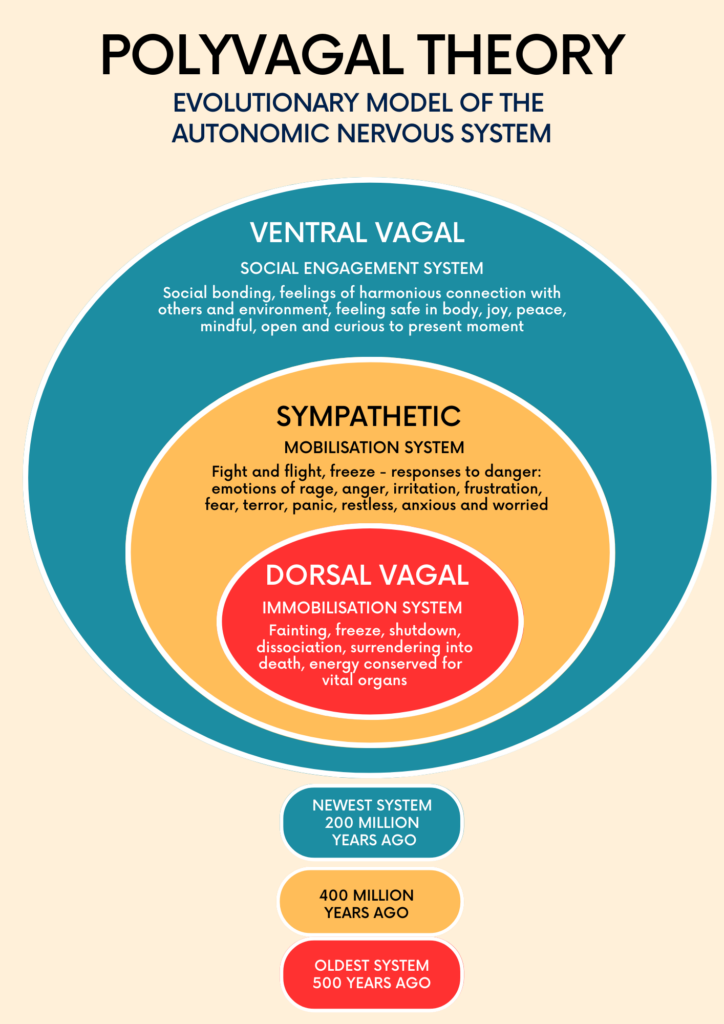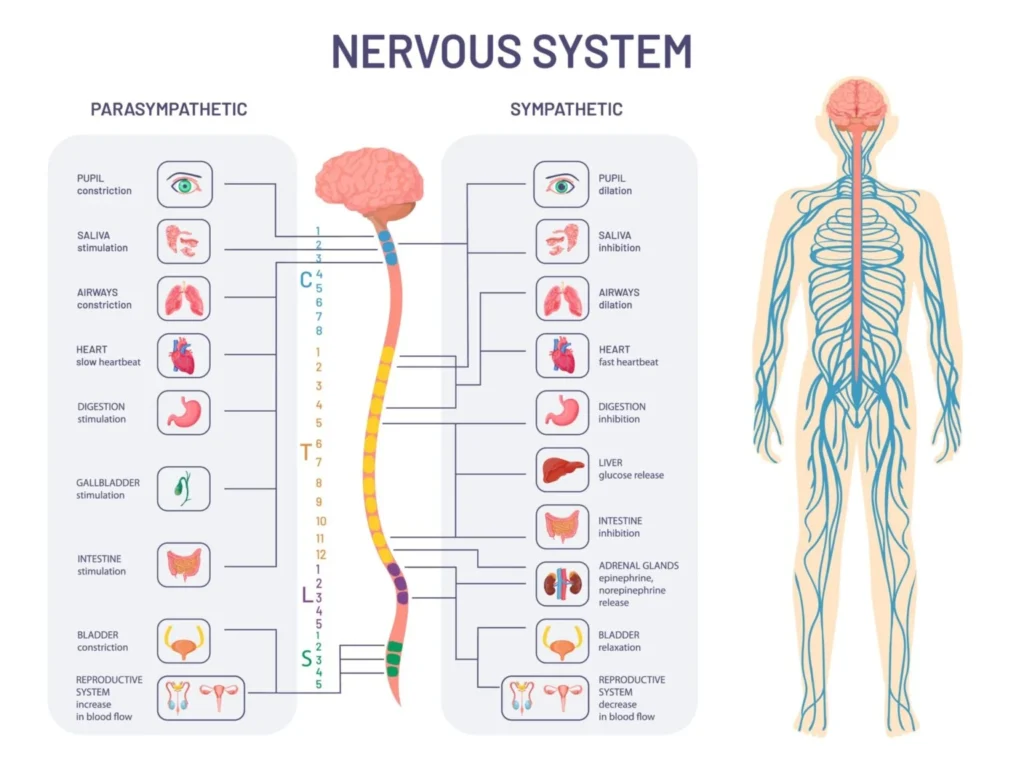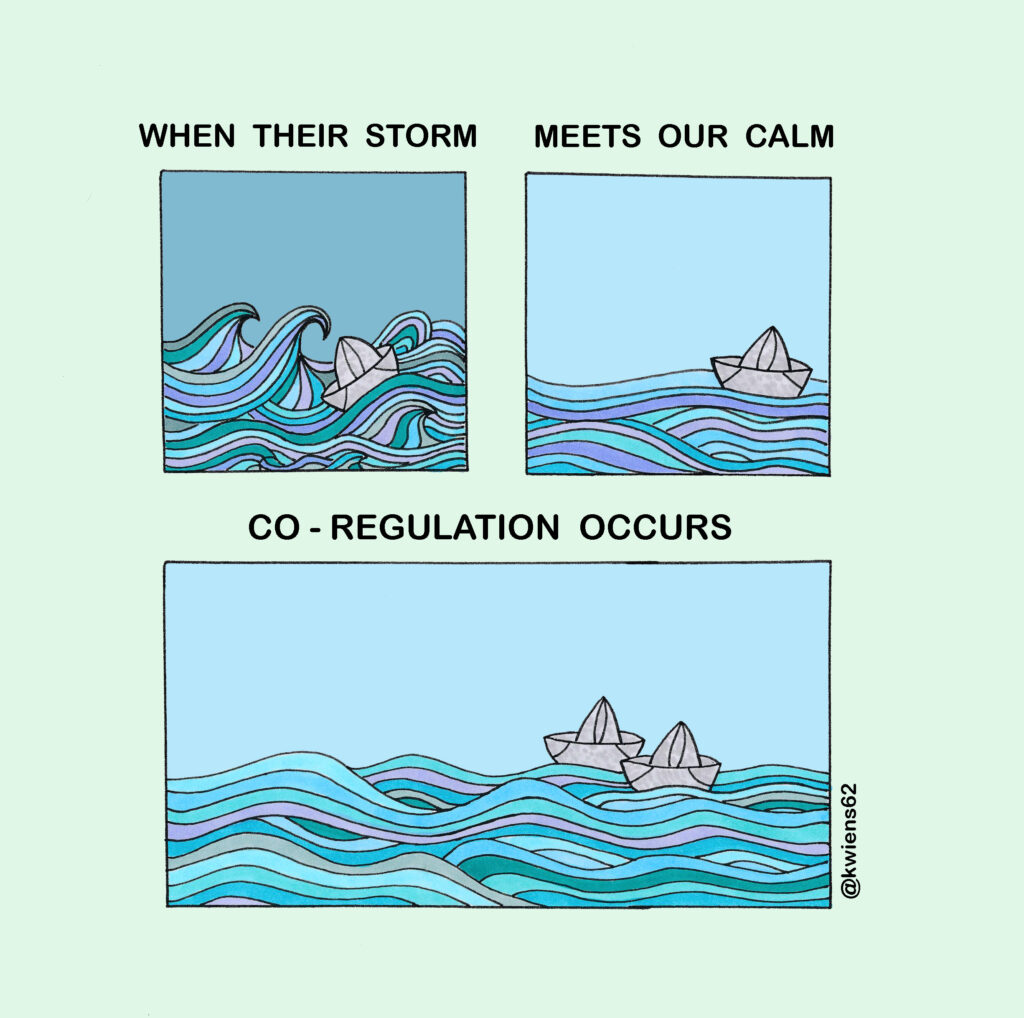Leadership is no longer just about strategies, charisma, or intelligence. More than ever, it’s about connection. But what drives connection? The answer may surprise you—it lies in the regulation of the nervous system.
At the heart of this concept is Polyvagal Theory (PVT), a groundbreaking framework developed by Dr. Stephen Porges. While this theory is rooted in psychology and neuroscience, its relevance extends far beyond those fields, influencing how leaders engage, connect, and inspire.
Here’s the question to consider as we explore this topic further: How can leaders regulate their nervous systems to foster not just psychological safety but also high performance within their teams?
 Image Source: Aldebaran Healing
Image Source: Aldebaran Healing
What Is Polyvagal Theory? Connecting Leadership to Neuroscience
Polyvagal Theory focuses on how our autonomic nervous system (ANS) operates as our body’s command center, especially in response to safety and stress. Understanding its core principles provides leaders with a powerful framework for transforming how they manage themselves, their teams, and their organizations.
The ANS consists of three states, each activated based on environmental and relational cues. Here’s a simplified breakdown of how those states manifest in the context of leadership:

Ventral Vagal State (Social Engagement Mode)
- Traits: Calm, connected, innovative, and collaborative.
- Leadership Impact: Leaders in this state communicate effectively, foster trust, and inspire collaboration.
Sympathetic State (Fight-or-Flight Mode)
- Traits: Reactive, hyper-focused, defensive, and anxious.
- Leadership Impact: This state often results in high stress, micromanagement, or hasty decisions under pressure.
Dorsal Vagal State (Shutdown Mode)
- Traits: Withdrawn, disengaged, and burnt out.
- Leadership Impact: Leaders tend to avoid conflict, innovation stalls, and morale suffers.
Navigating between these states is not a conscious decision—it’s governed by neuroception, our nervous system’s ability to unconsciously evaluate safety or danger in our environment. For leaders, this makes emotional self-awareness and nervous system regulation critical tools for success.
Why Nervous System Regulation Matters in Leadership
Research shows that the tone a leader sets directly shapes the emotional and functional dynamics of their team—a phenomenon Porges refers to as co-regulation. When a leader is regulated, they act as an “emotional anchor,” enabling their teams to feel safe, engaged, and empowered.

The Costs of Dysregulation
What happens when leaders fail to regulate their nervous systems?
- Cognitive Rigidity: Key decision-makers cannot think creatively or adapt effectively under stress.
- Team Resistance: Chronic stress from non-regulated leadership fosters distrust, turnover, and disconnection.
- Empathy Gaps: Unregulated stress diminishes empathy—and without empathy, psychological safety collapses.
The Benefits of Regulation
- Enhanced Engagement: Calm and composed leaders cultivate an atmosphere of trust and collaboration.
- Improved Decision-Making: Leaders can think critically and innovatively while navigating challenges.
- Team Resilience: Teams mirror regulated leaders, resulting in greater adaptability and sustained performance.
Applying Polyvagal Theory to Leadership Development
Here’s the good news—like any skill, nervous system regulation can be learned and applied through intentional practices.
Self-Regulation Strategies for Leaders
Stay calm under pressure with these tools for shifting into the ventral vagal state (social engagement):
- Breathwork: Research confirms deep, slow breathing helps deactivate fight-or-flight responses. Try box breathing—inhale for 4 seconds, hold for 4, exhale for 4, hold for 4.
- Somatic Awareness: Recognize physical cues of stress (e.g., tight shoulders or quickened heart rate) before they hijack decisions.
- Grounding Practices: Use techniques like cold water on wrists or feeling the ground beneath your feet to stay present.
Building Psychological Safety for Teams
The workplace is an ecosystem of interconnected nervous systems—and anxiety spreads fast. Exceptional leaders actively create conditions for their teams to flourish.
- Encourage Co-Regulation: Foster a culture where team members feel each other’s support under pressure.
- Focus on Connection: Simple strategies like active listening, maintaining open body language, and showing gratitude during team interactions can reinforce a sense of trust.
- Authentic Leadership: Vulnerability, transparency, and consistency signal to the team that their environment is safe.

Uniting Team Performance with Polyvagal Principles
The dynamics of teams parallel the states of the nervous system. High-performing teams thrive in a ventral vagal state, while stressed teams default to sympathetic (fight-or-flight) or dorsal (shutdown) responses.
Leaders who understand Polyvagal Theory can unlock the following advantages for their organizations:
- Resilience: Teams recover faster from setbacks, handling challenges with confidence.
- Innovation: Safety nurtures curiosity, leading to increased creativity and problem-solving.
- Collaboration: Regulated leaders foster socially engaged teams that communicate transparently and work together effectively.
Practical Strategies for Shifting Team States
From Fight-or-Flight (Sympathetic) to Engagement
- Address concerns with clarity to ease uncertainty.
- Guide the team back to tasks with structured workflows and achievable goals.
From Shutdown (Dorsal Vagal) to Productivity
- Identify signs of disengagement and reconnect through one-on-one conversations.
- Set reset moments—these can be collaborative brainstorming sessions or frequent wellness checks.

The Future of Leadership Lies in Neuroscience
It’s time for the modern leader to elevate their toolkit beyond IQ (intelligence quotient) and EQ (emotional intelligence). The next frontier? NSQ (Nervous System Intelligence).
When leaders consciously align their nervous systems to create safety, the results ripple through every level of their teams and organizations. The principles of Polyvagal Theory offer not just insight but a roadmap for building healthier, high-performing environments where individuals and teams can thrive.
How will you begin regulating your nervous system as a leader today? The transformation starts with you. Contact a Leadership Circle representative today to get you started on your journey to more connected, intentional leadership.





Your blog is a testament to your dedication to your craft. Your commitment to excellence is evident in every aspect of your writing. Thank you for being such a positive influence in the online community.
Your blog is a constant source of inspiration for me. Your passion for your subject matter is palpable, and it’s clear that you pour your heart and soul into every post. Keep up the incredible work!
The connection between leadership and nervous system regulation is such an insightful perspective! Polyvagal Theory really highlights how a leader’s ability to manage their own state can directly impact team dynamics and psychological safety. I’d love to hear more about practical strategies leaders can use to regulate their nervous systems in high-stress situations—any recommendations?
Your writing has a way of making even the most complex topics accessible and engaging. I’m constantly impressed by your ability to distill complicated concepts into easy-to-understand language.
Your blog is a treasure trove of knowledge! I’m constantly amazed by the depth of your insights and the clarity of your writing. Keep up the phenomenal work!
Your blog is a shining example of excellence in content creation. I’m continually impressed by the depth of your knowledge and the clarity of your writing. Thank you for all that you do.